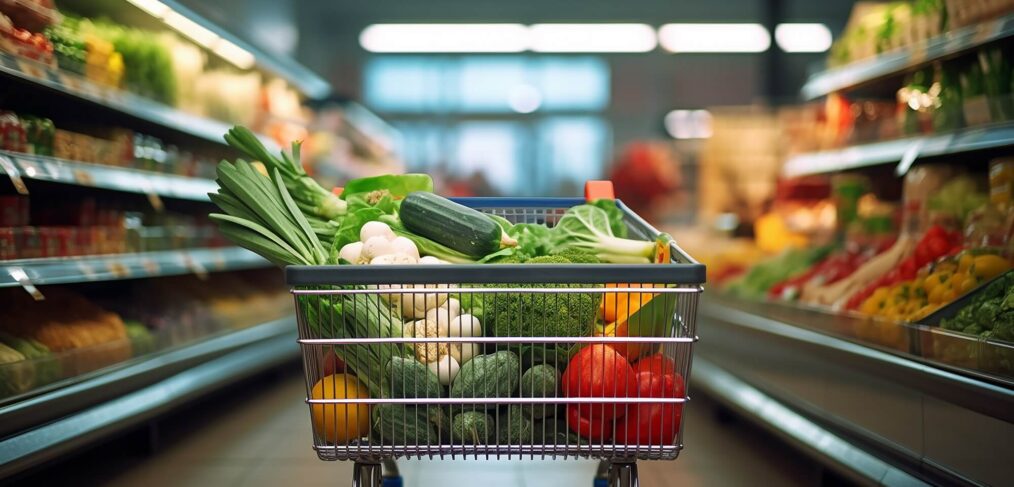
2023 – The Year In Review
The year of 2023 has come to an end. It is a year my wife and I wish to forget. Three months removed from my third knee replacement surgery, my wife was diagnosed with lymphoma cancer for the 2nd time in her life. Due to the great work of the Doctors and Nurses at Princess Margaret Hospital, Teresa is in full remission, and we look forward to our first vacation in over 2 years. With this year in the rear-view mirror, let’s review four (4) key insights from 2023 as identified by the Hartman Group.[i]
1.The Great Wellness Reset
The majority of consumers (93%) want to eat healthy at least some of the time, with 63% trying to eat healthy most or all of the time[ii]. Most consumers believe what they eat impacts their physical health. “Healthy eating means eating a variety of foods that give you the nutrients you need to maintain your health, feel good, and have energy. These nutrients include protein, carbohydrates, fat, water, vitamins, and minerals”[iii] For consumers this includes but is not limited to: 1) Engage in a plant-based diet, reducing their red meat and traditional milk consumption, 2) Seeking products high in fibre and protein. Yet, due to inflation, 70% of consumers are having to give up something in their health and wellness toolbox.[iv]
Inflation is impacting each age group. Today, brands need to take that extra step in communicating multiple dimensions of value to maintain consumer loyalty.
Communicating just health and wellness benefits is not enough.

2.Modern Beverage Culture
The sugar reduction trend is alive and well, with 72% of consumers trying to either reduce sugar or avoid it altogether[v]. This has given rise to the sugar-free beverage market. This sector is projected to top $237.5B USD by 2030, growing at a 7.23% Compounded Annual Growth Rate between 2022-2030.[vi] Artificial sweeteners as a substitute have also lost their halo, with 31% of consumers seeking reassurances that the product does not contain artificial sweeteners.[vii] Consumers want reassurance that sweetness is derived from intrinsic ingredients as far as possible so the “No Added Sugar” positioning is being increasingly embraced.
Sugar and sweeteners are the new evil. Brands would be wise to eliminate if possible. In place of sugar, certain brands are utilizing dates. Per 100G, dates contain 1/3 less sugar and contain 8 grams of fibre, as compared to 0 grams of sugar.[viii] If sweeteners remain a must, brands need to have a clear understanding as to which ones, and by how much are tolerated for their category is essential in today’s market.
3.Personalized Sustainability
The global food sector is responsible for 26% of greenhouse gas emissions.[ix] Consumers are taking a proactive approach to sustainability, with 78% of consumers saying that environmental sustainability is important and that they wish to lead more sustainable lives.[x] Since 2017, sustainable-marketed products have grown 2x faster than conventional-based products, and now control 17.3% market share.[xi]
Sustainability is the new norm. Consumers demand brand’s focus on sustainability initiatives (organic, up-cycled ingredients, compostable packaging) moving forward. Brands would be wise to highlight the personal benefits (health, taste, quality of life) consumers gain through their purchase. Shelf level communications are key as close to 40% of all consumers find sustainable based products while shopping.[xii]
4.Generation Z Coming of Age
The Gen Z group (1997-2012) is coming of age. In 2021, they accounted for 17.6% of Canada’s population, and their purchasing power in the US is estimated at $100B, and that’s before you factor in the influence that the youngest Gen Z members have on their Generation X parents.[xiii] The environment is their top concern, and 42% seek out retailers that carry sustainable based products.[xiv]
Moving forward, it is critical brands reach out to this sector. Acknowledging and celebrating cultural diversity, and social justice is important to them. This generation places more faith in smaller brands to protect the environment, and they value transparency, and honesty and ask brands to engage with them as individuals, not just as a consumer.
I leave you with this quote:
“Without Food, We Cannot Survive, and That is Why the Food Industry are So Important”!
Marcus Samuelsson
[i] Key Insights from 2023, The Hartman Group, December 2023
[ii] Healthy-Conscious Consumers: What do they Want, www.mysobol.com,
[iii] What Does Healthy Eating Mean, www.breastcancer.org, April 2023
[iv] Key Insights from 2023, The Hartman Group, December 2023
[v] Sugar Reduction in 2024, www.foodnavigator.com, December 2023
[vi] Sugar Free Beverage Market, www.marketresearchfuture.com. December 2023
[vii] Sugar and Sweeteners: Consumer Priorities Triggering Change, www.euromonitor.com, August 2021
[viii] Date vs. Sugar – In-Depth Nutrition Comparison, www.foodstruct.com
[ix] Environmental Impacts of Food Production, www.ourworldindata.org
[x] 51 Huge Environmentally Conscious Consumer Statistics 2023, www.theroundup.org, November 2023
[xi] The Durability of Sustainability Amid Inflation, www.circana.com, 2023
[xii] The Durability of Sustainability Amid Inflation, www.circana.com, 2023
[xiii] The Purchasing Power of Millennials and Generation Z, www.wundermanthomposon.com
[xiv] The Durability of Sustainability Amid Inflation, www.circana.com, 2023





